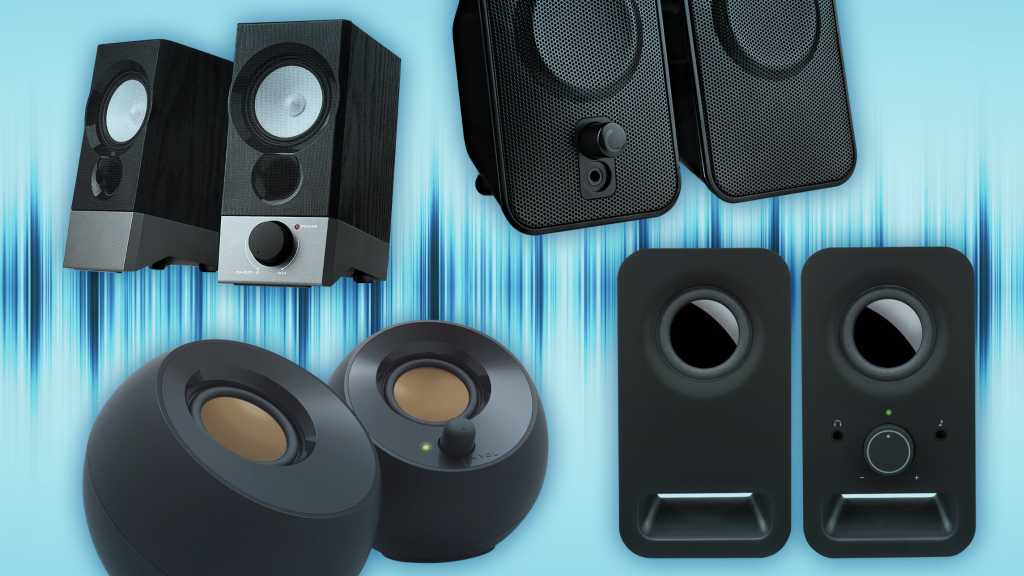Don’t let your favorite music and movies go to waste as you play them through your laptop’s built-in sound system. Your audio can come out sounding weak and lifeless with even the best laptop speakers. External PC speakers—along with a good set of headphones—are essential for getting the best fidelity from your media files.
Luckily, you don’t need to buy a complete 7.1 surround sound system to make up for it. For less than $100, you can find some affordable speakers that provide quality audio. It’s true that at this price point you will need to make a few compromises, but the best budget computer speakers can still offer a satisfying listening experience while saving you money, and that’s what we call a win-win.
To help you find the best speakers for your needs, we’ve reviewed many of the most commonly available budget models on the market. To test each speaker, we set it up in a typical environment—on a desk in a home office—and play a variety of audio tracks while pushing their sound capabilities to the limit. Check out our best picks below.
We also offer advice on buying speakers after our recommendations to help you make a more informed purchasing decision.
Update 10/6/23: We snuck in a look at a speaker over $100—and while you can definitely find cheaper good picks (see the list below!), the Edifier MP230 is very nice. If you’ve got wiggle room in your budget, it’s one to consider when looking for a compact, attractive speaker compatible with PC and mobile devices.
Creative Pebble – Best overall budget speakers
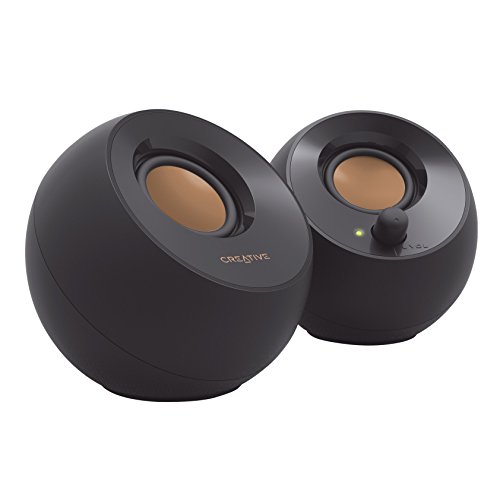
Pros
- Extremely affordable
- Excellent audio quality
- Space-saving design
Cons
- No Bluetooth connectivity for mobile devices
We wouldn’t have thought a set of $20 speakers would impress us much, let alone turn out to be our favorites. But Creative Pebble’s simple USB-powered 2.0 system defies all odds, producing richer, more immersive audio than you commonly find in speakers at twice the price—and twice the size. Though we wish these offered Bluetooth connectivity for mobile devices, the Pebble is still a top-notch choice.
Sound BlasterX Kratos S3 – Best budget 2.1 system
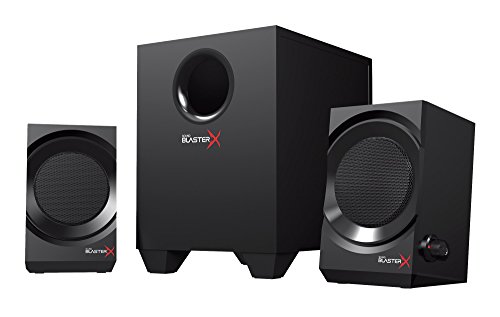
Pros
- Wooden construction enables natural, warm sound
- Small footprint
- Deep, rich bass
Cons
- No extra audio inputs for mobile devices
Though the Sound BlasterX Kratos S3 is marketed for gaming, we like how its wooden construction enables warm, natural sound and beefy bass for all of our media. At just $80 it’s an inexpensive entry point into 2.1 speaker systems, without taking much space at all.
Creative Pebble Pro – Best speakers for multiple devices
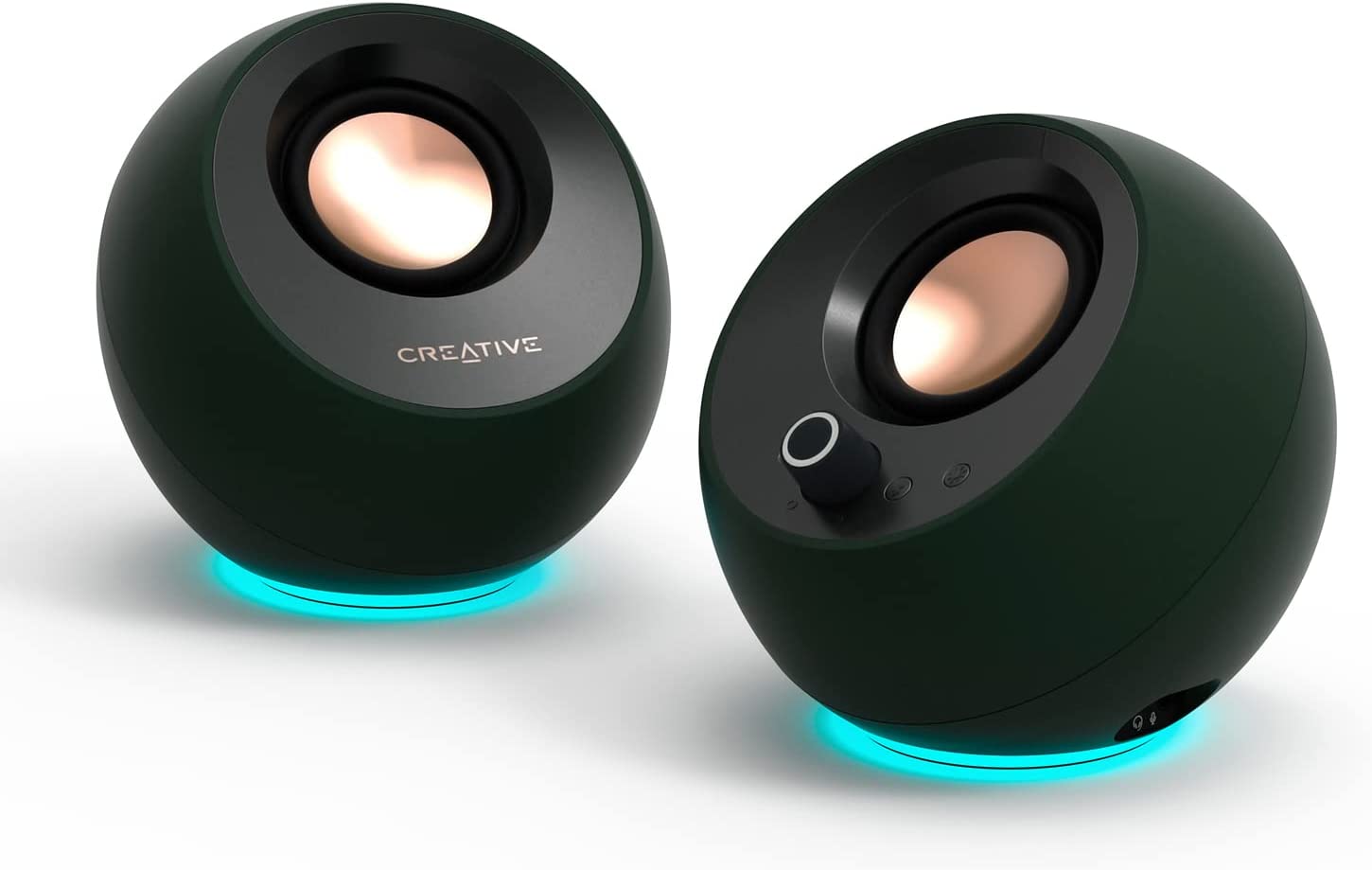
Pros
- Clear, detailed audio
- Can get very loud
- No distortion at high volume
- Noise cancellation through Creative’s software
Cons
- Volume adjustments are more minimal at higher volumes
Imagine our top overall pick, and then soup it up with more features—namely, much more connectivity and sweet RGB lighting. If you have multiple devices (plus a headset and microphone), these speakers let you centralize everything. You can connect devices via USB, a 3.5mm aux cable, and Bluetooth, and there are jacks for a 3.5mm headset and a dedicated 3.5mm microphone, too. It’s a great upgrade option if you want the Pebble’s great sound but want just one set of speakers for your gear.
Monoprice DT-3BT – Best premium Bluetooth option
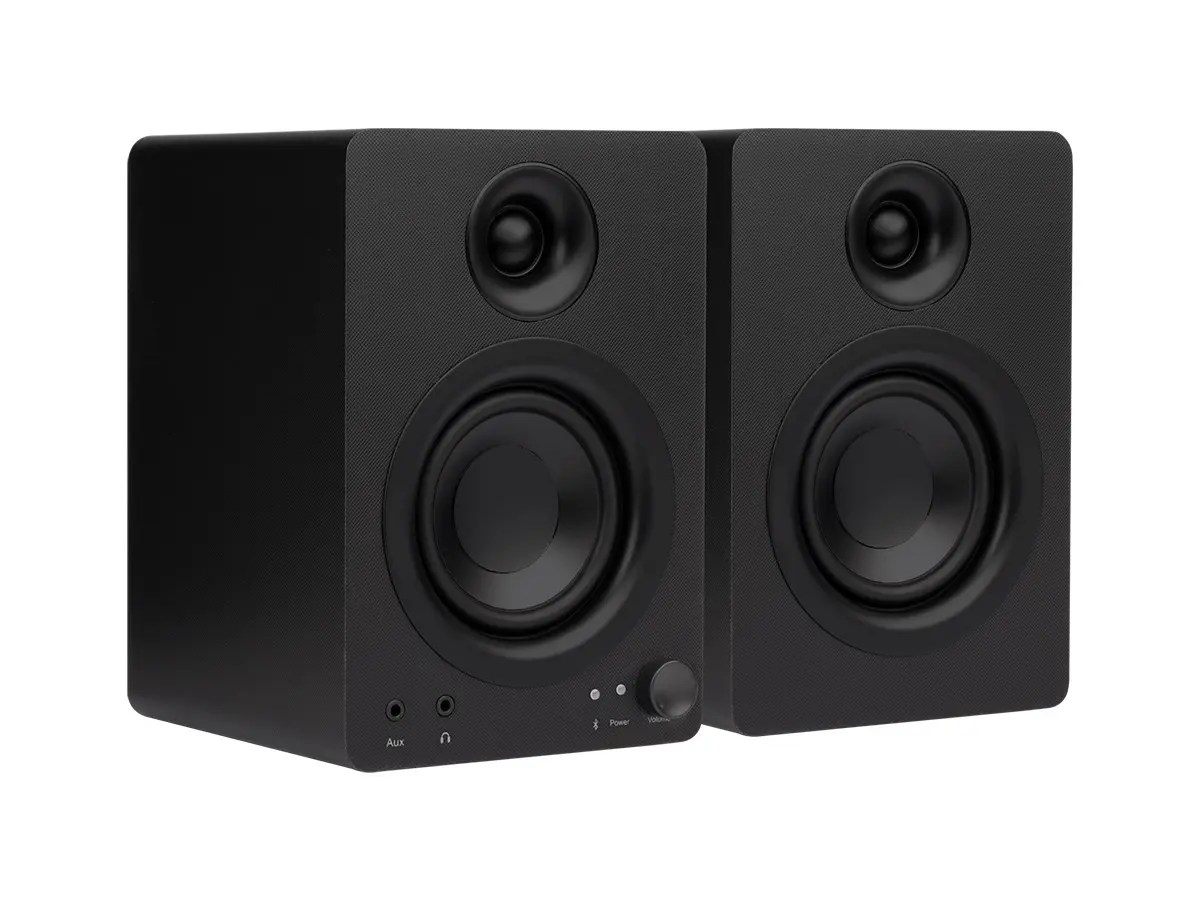
Pros
- Clean audio
- TRS, RCA, and Bluetooth connectivity
- Capable of very loud volume
- Easy access to aux input and headset output jacks
Cons
- Audio will sound a little hollow to some ears
- Audio distortion at higher volumes
For years, Monoprice has sold affordable, quality tech gear without fanfare or frills. It continues this tradition with its 50-watt DT-3BT desktop speakers, which sport clear audio and support the most common kinds of connections. There’s of course Bluetooth 5.0 for clean, wire-free setups, but TRS and RCA jacks are available, too. Combined with the understated appearance and tidy $100 price tag, they’re an excellent option for speakers with good sound and simple setup straight out of the box.
Logitech Z207 2.0 Stereo Computer Speakers – Best multi-source option
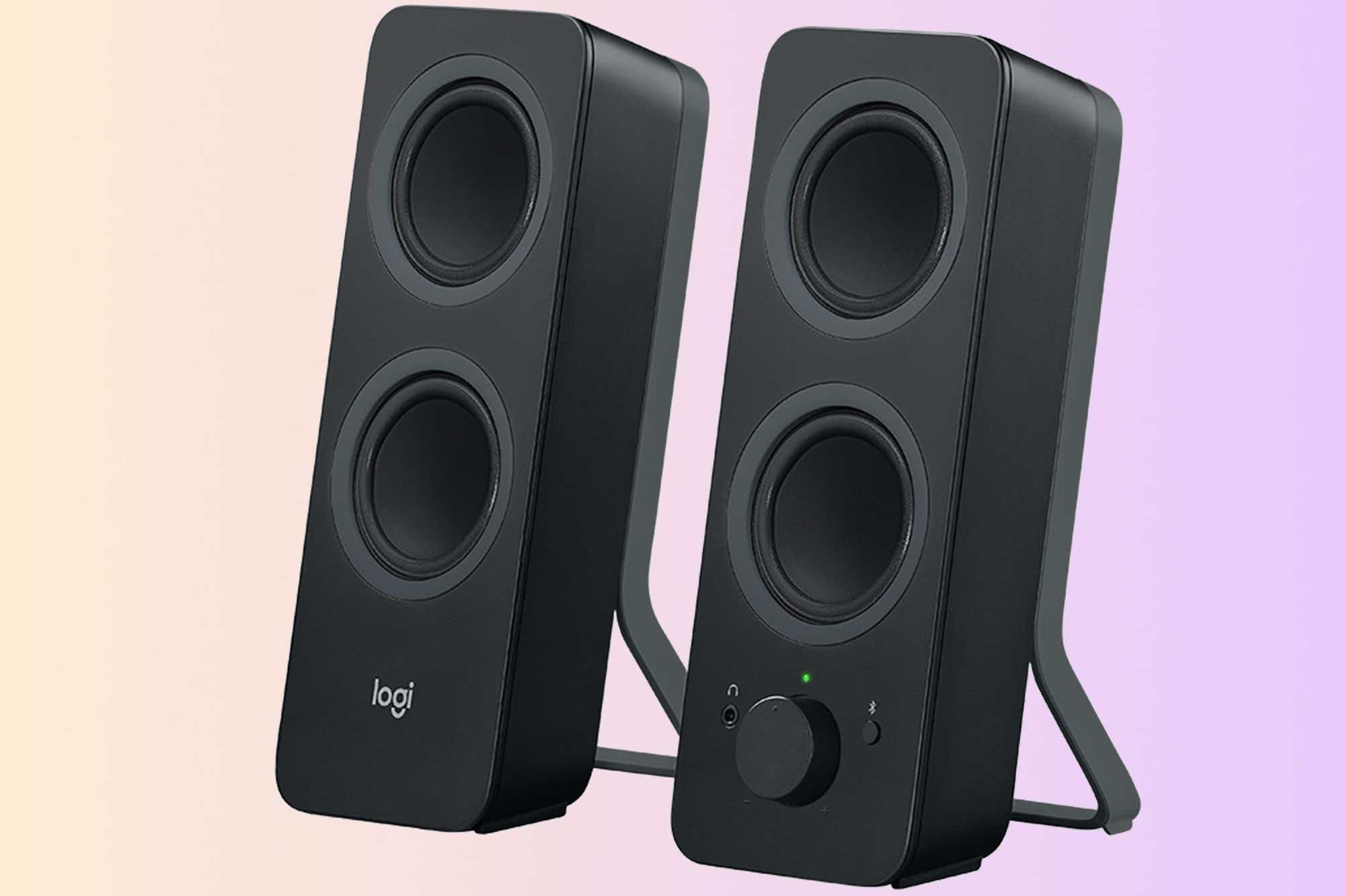
Pros
- Impressive audio quality
- Allows you to switch between three connected devices
- Easy setup and operation
Cons
- Larger than many other desktop speakers
- No audio controls other than volume
A great option if you want to be able to switch among different sources. These speakers support easy switching among three simultaneous connections. At 9.5 x 3.5 x 4.9 inches (HWD), they’re on the larger size, and thus aren’t the most discreet speakers, but they deliver good performance.
Cyber Acoustics CA-2890 Speaker Bar – Best space-saving option

Pros
- Clip mount keeps it off your desk
- Clear, distortion-free audio
- Can get very loud
Cons
- No bass
- Weak stereo audio
This basic speaker bar may be outclassed by other extremely affordable rivals in some ways, but it has feature that keeps it in the running—you can clip it to a monitor. That gets this speaker off your desk, a plus for anyone with limited real estate or a love for minimalism. Add in clear audio reproduction, and lack of distortion at high volume, and those seeking a good compact option can forgive it for its lack of bass and proper stereo output.
AmazonBasics USB-Powered Computer Speakers with Dynamic Sound – Best dirt-cheap option
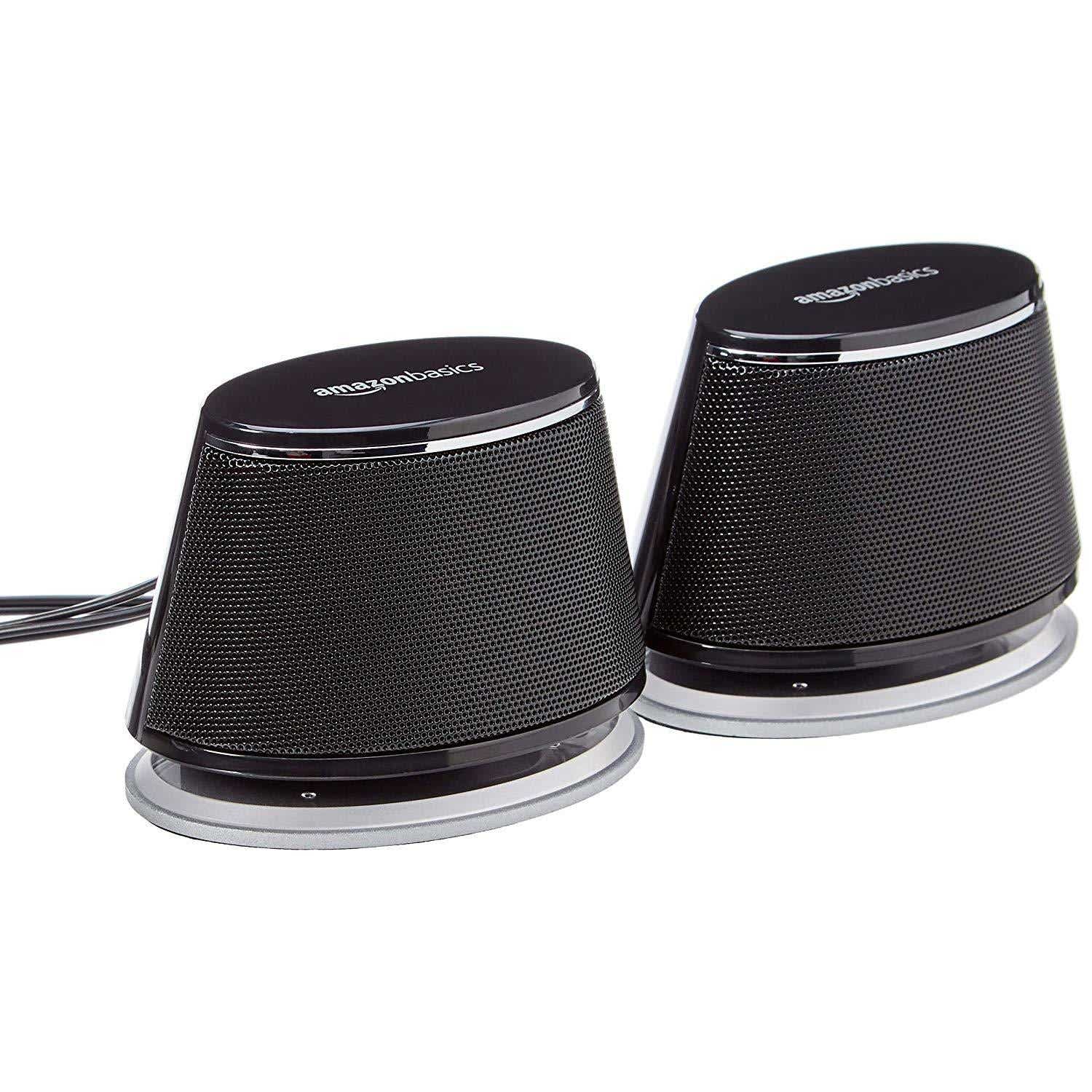
Pros
- Well-rounded sound
- Plug-and-play setup
- Low price
Cons
- Can’t turn off accent lighting
These AmazonBasics USB-powered computer speakers get you well-rounded audio for a rock-bottom price. If your budget is tight, you can’t go wrong with this option.
FAQ
What type of speaker should I get? Ex: Should I am for a 5.1 setup? And are 2.1 speakers better than 2.0 speakers?
In this price range, a 5.1 multi-channel speaker setup (five speakers, one subwoofer) won’t sound as good as better models. The same amount of money can buy a much better quality two-speaker system. These basic 2.0 stereo setups, which are comprised of just a left and right speaker with a single driver (the actual loudspeaker) in each, abound in this price range. Occasionally you can also find a decent 2.1 system—a pair of speakers to handle the higher frequencies and separate subwoofer for the bass—for not much more. These take up extra space but often produce more balanced sound.
How do I pick a speaker that sounds good?
Don’t lean too heavily on manufacturers’ specs when making a decision. Even if you can parse frequency response numbers, they are often exaggerated. Let your ears be your guide instead. Listen for a good balance between the high (treble), mid, and low (bass) frequencies. Often, speakers will exaggerate one—usually the treble or the bass—at the expense of the others. Good speakers will produce full, detailed audio that sounds as the creator intended it.
Be aware, though, that finding strong bass response in this price range can be challenging. Without a subwoofer, 2.0 systems have trouble reproducing low frequencies. The manufacturers often use technological tweaks to amplify the bass notes, but these can sound boomy, and distort the overall mix. If a deep, controlled bottom end is a priority, a 2.1 system might be a better investment.
Should I get speakers that use AC power? Or is a set that uses USB power OK?
Both these options are prevalent in the sub-$100 price range. USB-powered speakers reduce cord clutter, as they don’t need a separate power cable. However, they can’t supply as much juice as the AC variety, so they tend to produce lower volume and less bass.
